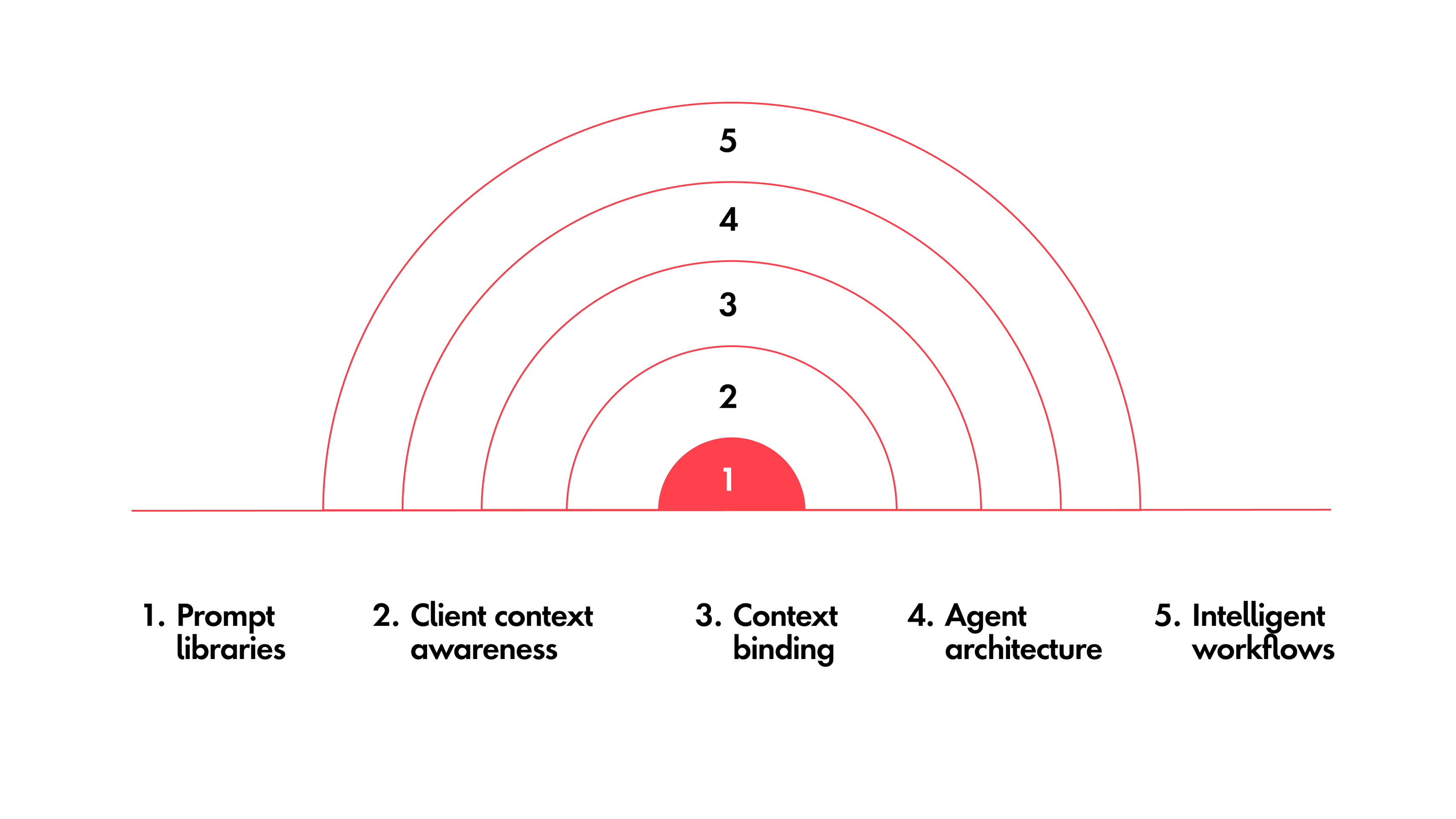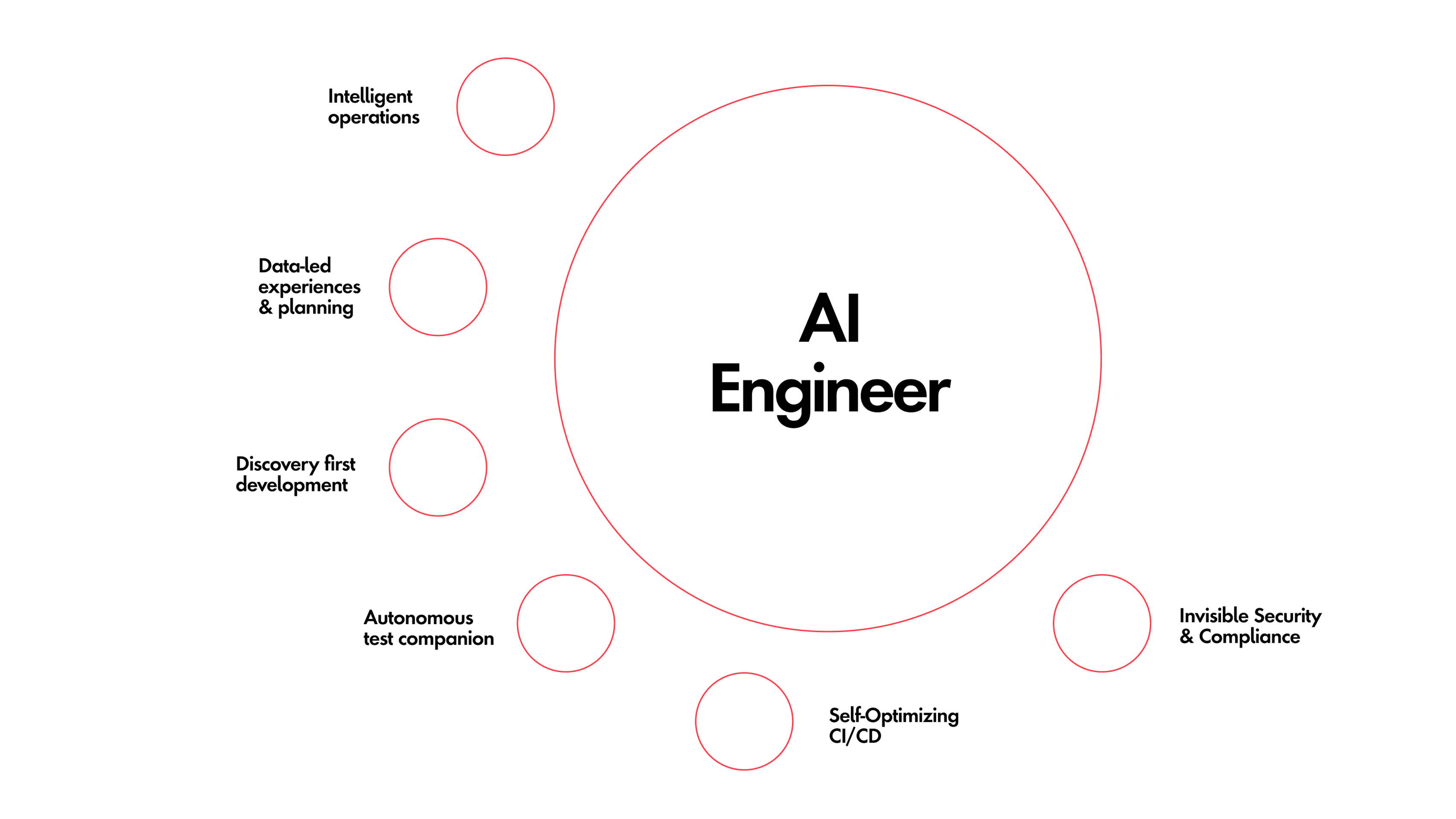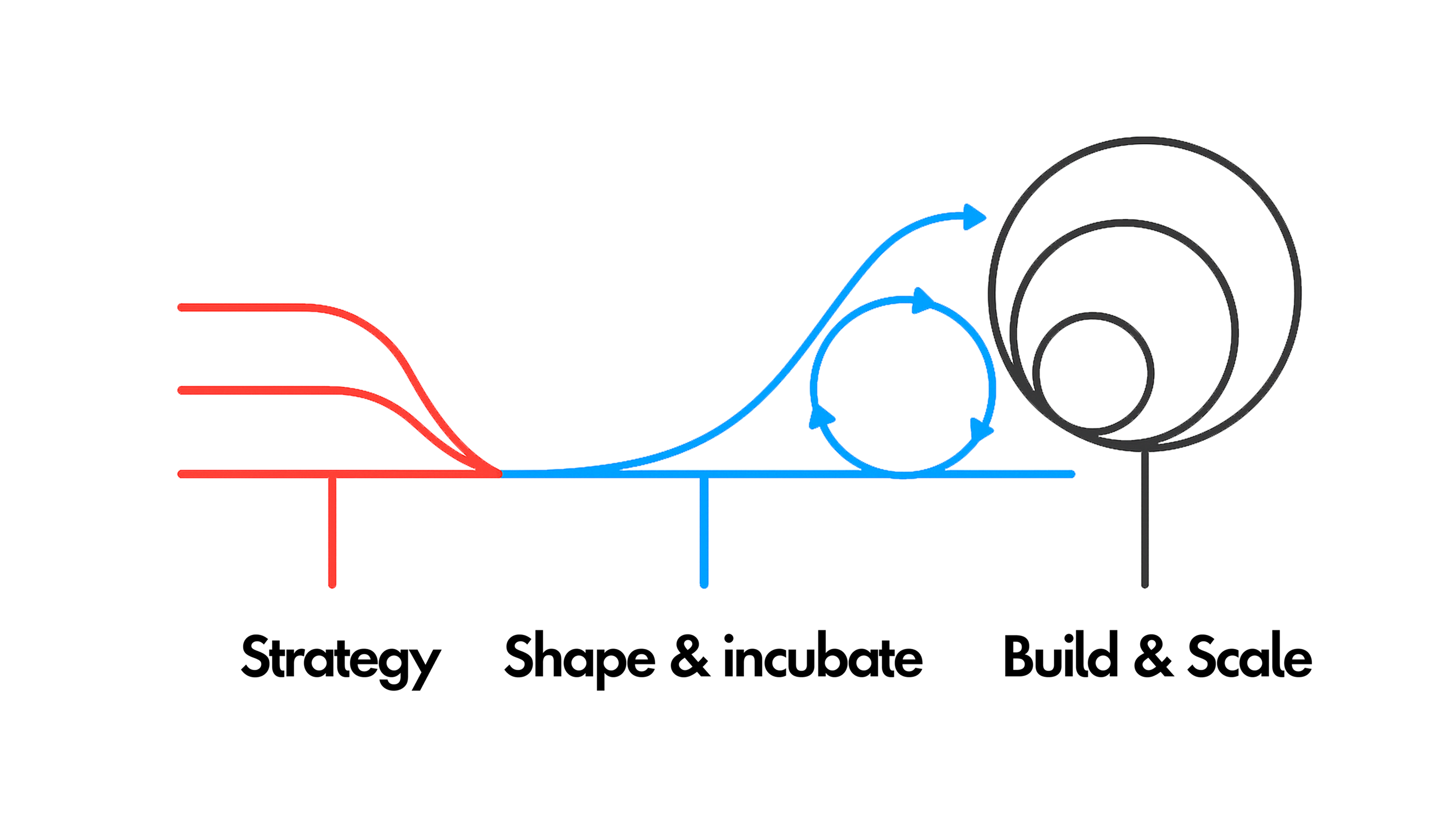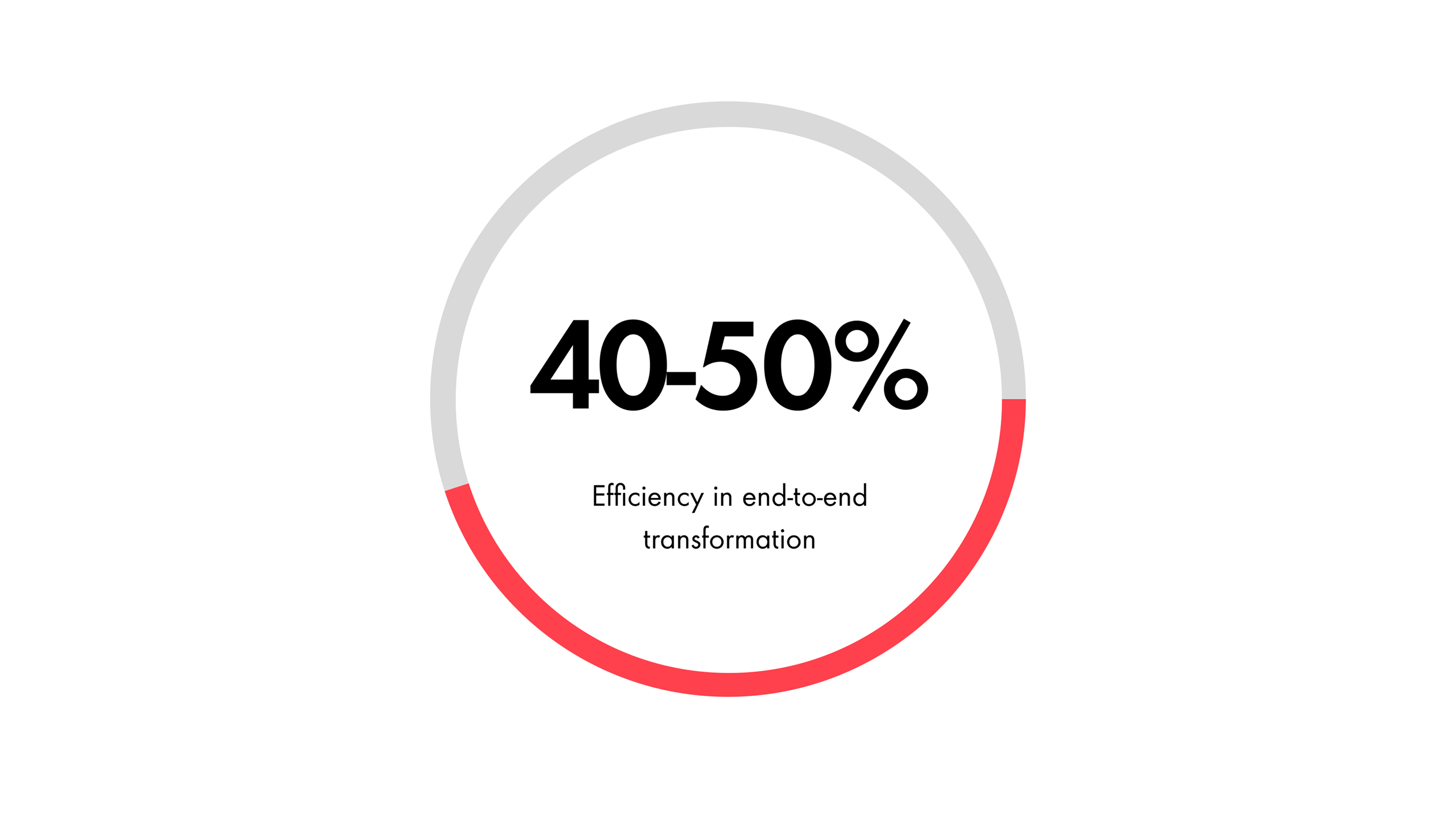What issue can we solve for you?
Type in your prompt above or try one of these suggestions
Suggested Prompt


Next-Gen Digital Factory: A New Era of AI-Powered Software Development
A strategic guide to reimagining your entire software development lifecycle with AI, automation and modern engineering practices.


The complacency crisis in enterprise software delivery
Complacency is the greatest danger facing enterprise software delivery today. Like the proverbial frog in slowly heating water, many organizations have become numb to the creeping inefficiencies of outdated development models only to realize the consequences once it’s too late.
The result isn't just technical debt—it’s a growing inability to respond to change, meet customer expectations or scale innovation. Despite decades of Agile and DevOps adoption, many enterprises still struggle with fractured workflows, manual handoffs and excessive operational overhead that slow everything down.
AI-powered digital factories offer a productive disruption. These are intelligent, end-to-end software delivery environments where AI agents, automation, and data-driven workflows replace manual effort and fragmented tooling. By embedding intelligence into the entire lifecycle, digital factories enable teams to focus on innovation, not coordination. The result: faster delivery, better quality and the flexibility to scale what works.
The key is to rewire delivery not around process tweaks, but paradigm shifts:
- From manually generated requirements to AI-powered Epics and Stories generation
- From one-time design to continuous iteration
- From manual coding to prompt engineering
- From redundant buildouts to reusability by default
- From webs of dependencies to seamless orchestration
- From endless documentation to explainable software
- From human-led testing to self-healing code
- From manual compliance to agentic governance
- From fixing one-time defects to rebuilding the entire app
This is the foundation of the next-gen digital factory.
Why traditional Agile frameworks struggle at scale
Despite its popularity, scaled Agile often falters in practice. Its original promise—faster feedback, continuous improvement, empowered teams—gets diluted by legacy mindsets and constraints. Enterprises encounter three persistent barriers:
- Hybrid models create friction. Agile practices are often layered onto waterfall-era governance, with documentation requirements and approval gates that slow delivery and create cognitive dissonance.
- Dependencies stifle velocity. Shared devices, legacy integrations and monolithic codebases create bottlenecks that stall progress and inflate coordination overhead.
- Human variability introduces risk. Skill gaps, resource limitations and inconsistent tooling lead to uneven throughput, higher defect rates and lower morale.
These issues aren’t fixable through marginal improvement. They require a re-architecture of the software development lifecycle (SDLC)—one that embraces AI as a pair programmer, compliance partner, quality enforcer and innovation engine.
Introducing Sapient Slingshot: AI software development reimagined
Sapient Slingshot is Publicis Sapient’s proprietary AI-powered software development and modernization platform. Built to embed industry and technical context across every phase of the SDLC, it accelerates modernization, reduces risk and boosts team productivity.
Core capabilities
These elements work together with human oversight, to create a modular platform that adapts to enterprise environments while driving step-change improvements in speed, quality and cost.
Slingshot has demonstrated measurable business outcomes across industries—from banking and healthcare to automotive and government.
Layered architecture
- Foundational Layer: A secure and scalable infrastructure forms the backbone for efficiently running AI workloads (e.g. LLMs, Rags, Guardrails, etc)
- Base SDLC Engineering Capabilities: Essential software development tools offer streamlined code generation, unit testing and deployment, supported by software agents for architecture and testing automation.
- Knowledge Context Store: A repository housing domain-specific, organizational and Publicis Sapient knowledge, enhancing AI's contextual understanding.
- Org-Awareness and Contextual Software Engineering Tools: Custom-built tools apply this enterprise context to generate smarter code, improve reuse, and support non-functional testing and prompt refinement.
- Industry & Proposition Gen AI Agents: Specialized agents cater to specific industry needs, ensuring relevant solutions in sectors like banking, government and healthcare.
- People and Ways of Working: AI-assisted agile practices promote hypothesis-driven development, integrated tooling, effective governance and continuous skill-building.
This layered design ensures intelligence is not an overlay—it’s embedded deeply and intentionally.
Key differentiators of Sapient Slingshot
Unlike generic copilots or standalone AI tools, Slingshot is purpose-built for enterprise software delivery:

- Prompt libraries: Crafted by subject matter experts with deep industry expertise to generate product-ready enterprise solutions for a specific business purpose.
- Client context awareness: Referencing our own extensive industry and domain contexts as well as proprietary InnerSource products and accelerators.
- Context binding: Drives comprehensive and contextual integration to deliver the enterprise solutions.
- Agent architecture: Customized for the enterprise for key business decisions and processes. Leveraging capabilities such as planning, long-term and short-term memory.
- Intelligent workflows: Are designed to ensure that the right agents, context stores and prompts are assembled to solve complex enterprise problems.
Slingshot goes beyond automation. It brings intelligence, adaptability, and context to every stage of software delivery—understanding business needs, learning from patterns and scaling solutions with precision. It’s not just smarter software—it’s a smarter way to build software.
How an AI-enabled digital factory approach transforms the SDLC
By embedding AI into each SDLC phase, Slingshot delivers transformative time and quality improvements:

Source: This data is based on our analysis of over 100 end to end experiments with PSChat, PSBodhi, Slingshot, GPT using internal organizational data sets e.g., Vox, JIRA, Confluence, Internal portals, Github, PSInnersource combined industry research and metrics.
Slingshot delivers transformative time and quality improvements with AI embedded at every phase. In the concept phase, this means moving from manual research filled with stakeholder interviews to a 20 to 40 percent faster trend analysis with AI-generated concepts. In the design phase, you can move away from whiteboarding with manual UX/architecture to 30 to 40 percent faster architecture diagrams and reverse-engineered code plans. In the build phase, you can move away from hand-coding with manual integration to a 50 to 70 percent reduction in engineering time through AI code generation. In the text phase, you can move away from manual text-case writing and execution to 50 to 70 percent fewer defects with AI-generated exhaustive test suites. In the support phase, you can move away from reactive issue tracking and manual fixes to 20 to 30 percent faster MTTR via AI-driven monitoring and remediation.
Even accounting for additional governance and security reviews (adding ~10-15 percent overhead), enterprises see over 50-60 percent reduction in idea-to-live cycle times.
Case study: AI software development at scale in government
A leading government agency in Saudi Arabia partnered with Publicis Sapient to pilot the next-gen digital factory. The client was looking for a partner that can help bring generative AI expertise that could embed a digital factory in the organization to streamline the SDLC, as they were suffering many inefficiencies. They wanted to embed generative AI, streamline processes and improve delivery lead times. Key outcomes from the pilot included:
- AI-generated requirements. Agents analyzed business strategy and user data to produce detailed requirement documents within hours.
- Automated UI/UX prototypes. AI-driven tools generated interactive interface mockups aligned to brand guidelines.
- Contextual code generation. Domain-specific prompts and context stores enabled generation of production-grade code for core modules.
- Integrated testing and deployment. Self-testing code, synthetic data generation and automated CI/CD pipelines delivered zero-touch deployments.
Results: 60 percent reduction in development effort, 35 percent fewer defects in production and a 3x increase in deployment frequency—all within the first pilot sprint.
Empowering the AI-native engineers for the future of work
Rather than replacing human expertise, the next-gen digital factory elevates engineering roles:

Source: This data is based on our analysis of over 100 end to end experiments with PSChat, PSBodhi, Slingshot, GPT using internal organizational data sets e.g., Vox, JIRA, Confluence, Internal portals, Github, PSInnersource combined industry research and metrics.
- From coders to curators: Engineers shift from writing low-level logic to orchestrating agents and synthesizing solutions.
- From reactive to proactive: Data-led insights inform roadmaps and backlog prioritization.
- From QA bottlenecks to real-time quality. Testing is embedded and continuous.
- From manual CI/CD to dynamic deployment. Pipelines evolve autonomously with performance data.
- From compliance burden to confidence. Governance is handled invisibly, with human oversight reserved for edge cases.
This shift transforms engineers into strategic evaluators and curators of AI-driven outputs—driving higher job satisfaction and reducing burnout.
Measuring productivity with the SPACE framework
The next-gen digital factory uses the SPACE framework to measure productivity:
Superpower the people who do transformation:
Satisfaction & Wellbeing - Engineer sentiment scores, skill-development uptake
Performance - Code quality (defect rates), customer satisfaction (NPS)
Activity - Commit and deployment frequency
Collaboration & Communication - Reuse of components, knowledge-sharing sessions
Efficiency & Flow - Lead time for changes, mean time to recovery (MTTR)
Your scorecard is our scorecard:
S – Satisfaction & Wellbeing
P – Performance
A – Activity
C – Collaboration & Communication
E – Efficiency & Flow
By tracking these dimensions continuously, enterprises can fine-tune agent behavior, prompt libraries and workflows for optimal impact.
How to implement a next-gen digital factory in three phases
Rather than replacing human expertise, the next-gen digital factory elevates engineering roles:

1. Incubate & Foundational Setup
- Deploy foundational AI infrastructure and context stores
- Configure initial agents and define AI-driven ways of working
- Establish benefit model with quantitative targets
- Key outcomes: Gen AI Foundation ready, and success metrics baselined
2. Pilot Change & Validate
- Apply digital factory to two to three pilot projects
- Measure outcomes against SPACE targets
- Refine agents, prompts and governance based on feedback
- Key outcomes: Over 40% efficiency gains in the SDLC and target success metrics achieved.
3. Full-Scale Rollout
- Choose engagement model: Co-Create, Support or Consult
- Expand implementation across programs
- Central hub monitors metrics, evolves capabilities and drives continuous improvement
- Key outcomes: Successful adoption across the scaling teams and target success metrics achieved.
Organizational and cultural shifts for sustainable AI adoption
But tools alone won’t shift the paradigm—mindset and culture must evolve, too. To unlock the full potential of the next-gen digital factory, organizations must embrace two key shifts:
Process Transformation
Process transformation is at the core of transforming your organization with AI. The next gen digital factory allows you to go from consistent manual processes to AI-driven, automated process orchestration, from sprint-based feature delivery to value- and hypothesis-driven delivery, and from one-time solution design to continuous design with customer feedback.
Technology & People Evolution
The evolution of technology and people is part of embracing AI software development. The next gen digital factory allows you to go from standardized tooling to an AI-powered, composable tooling ecosystem, from manual dependency management to reusable, context-aware architecture, from manual dependency management to automated, seamless dependency resolution, from periodic upskilling to insights-based, guided learning journeys, and from burnout-prone teams to empowered, AI-augmented teams.
These cultural and organizational changes are just as critical as technology adoption.
Business impact: How AI software development drives real results
The next-gen digital factory drives measurable impact across strategic, customer, financial and operational dimensions:
- Strategic agility: Pivot quickly to market or regulatory changes
- Customer satisfaction: Accelerate feature delivery and reduce bugs
- Financial impact: Reduce development costs by 30 to 40 percent and shortens idea-to-live cycles from six to 12 months to one to three months
- Operational resilience: Improves time-to-market for regulatory or market-driven changes by 70 percent and reduces incident rates by 2-3x
Why choose Publicis Sapient for AI-powered software transformation
Publicis Sapient brings together deep industry know-how, full-scale transformation capabilities and an unwavering focus on real results.
We bridge the gap between strategy to execution through one end-to-end solution

Superpower the people who do transformation

The future of software delivery is AI-native and human-centric
The future of software is not just automated—it is intelligent, adaptive and human-centric. The next-gen digital factory is more than a toolset. It is a mindset shift, a new way of thinking about what software delivery can be when liberated from rote tasks.
In a world where generative AI advances daily, complacency is not an option. The real challenge is no longer technical—it’s imaginative. What could your teams create if 80 percent of their team were freed from maintenance? What experiences could you reinvent?
“What could your engineers build if they weren’t bogged down by maintenance?” Ready to transform your software delivery model and realize 40 to 50 percent efficiency gains? The next-gen digital factory awaits.



